I’ve always felt like visiting the U.S. Southwest was like visiting an alien world, but I had no idea just how alien until a recent visit to New Mexico and Arizona.
When people think of the southwest, what often comes to mind are images of Native American pueblos, cacti and the iconic landscape of signature buttes rising out of the red plain like in Monument Valley on the border of Utah and Arizona. While these wind-carved hoodoos and buttes are definitely suggestive of a Martian landscape more than a Terran one, it was when we did a 2-week driving tour of New Mexico and Arizona that we really got a glimpse of just how strange this area of the U.S. truly is.
Take White Sands National Monument, for example. Although I was fully expecting to see desert landscapes, especially having been to this area before, I didn’t expect a sparkling white desert.
New Mexico’s White Sands National Monument
When I first found photos of White Sands National Monument online, I made it my mission to find out exactly where it was, and White Sands became the must-see destination for us to visit in New Mexico. And once you see it for yourself, you’ll understand why: this national park lays claim to the world’s largest dunefield of pure white gypsum ‘sand’ – 275 square miles, in fact, of windswept, undulating waves of the stuff that moves and shifts daily, courtesy of the winds sweeping across them from the adjacent hills.
Even the park’s picnic area looks like it belongs on another world. And as you watch kids sliding down the dunes on their ‘flying saucer’ sleds, it really does start to resemble an interplanetary playground where life as we know it doesn’t exist.
It’s probably because of this apparent barrenness that White Sands was chosen as the location for the first atomic bomb detonation on July 16, 1945, now known as Trinity Site, ‘Trinity’ being the original code name assigned to it by Robert Oppenheimer. And although they haven’t blown up any nuclear weapons there since, the White Sands Missile Range, located just beside the national park, is still very much in operation.
But there is life here, in many forms, despite what looks like a blank and empty canvas. Tough desert flora, and equally hardy fauna make it their home, and a hike near the entrance of the park will reveal just how alive this strange place is.
TIP: White Sands National Monument is often closed for missile testing, so if you are planning a visit, be sure to check the schedule on the Park’s website.
The Very Large Array in New Mexico
Speaking of life forms, or at least the intergalactic search for new ones, another surprise that awaited us in New Mexico was the VLA – or Very Large Array. Here, a massive installation of giant radio telescopes are laid out in a Y-shaped formation on a flat plateau 50 miles from Socorro, New Mexico.
Put in place to gather information to help explore radio galaxies, quasars, pulsars, supernovas, and other astronomical bits and bobs, these enormous telescopes are pretty impressive.
But who’s fooling who with all this talk of quasars? We know they are really there to pick up the next call from E.T.
It’s probably no coincidence, then, that this massive communication installation is located only 164 miles from Roswell, New Mexico, which many believe was the site of other extraterrestrial activity in 1947, known as the Roswell Incident. (And assuming the speed of the average UFO, the two locations are practically around the corner from one another.)
The Meteor Crater in Arizona
It seems this part of the world is something of a target for visitors from outer space. Literally, a target, if you travel to Meteor Crater in Arizona and see the bullseye left after a ‘visit’ from a meteorite. While not imaginative in its name, Meteor Crater stirs the imagination when you see the sheer size of it. Two and a half miles across, the massive depression was formed 50,000 years ago, when an asteroid travelling at 26,000 miles per hour crashed into the surface, rocking the entire American Southwest.
It’s definitely worth the detour from Winslow to check it out, because like the Eagles’ song, this crater near Winslow, Arizona, is ‘such a fine sight to see’.
However you define alien, there’s no denying that Arizona and New Mexico offer their fair share of otherworldly oddities. But if these strange and unusual attractions aren’t enough for you, there’s always Area 51 in Nevada. (a mere 215 miles from Las Vegas – as the UFO flies.)

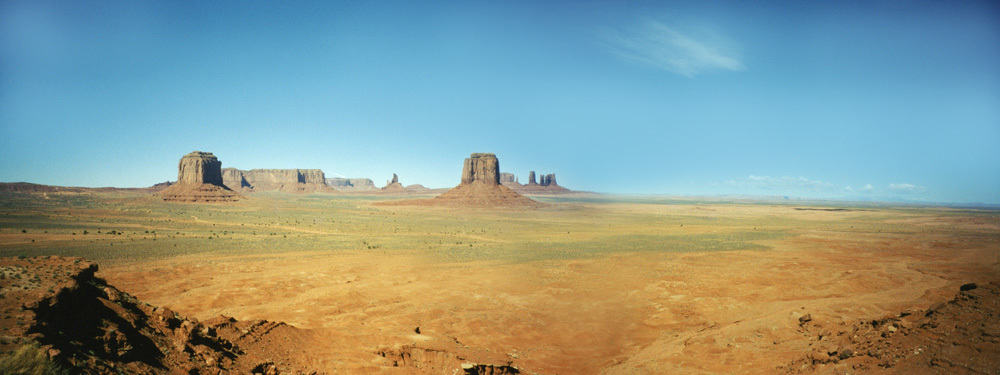
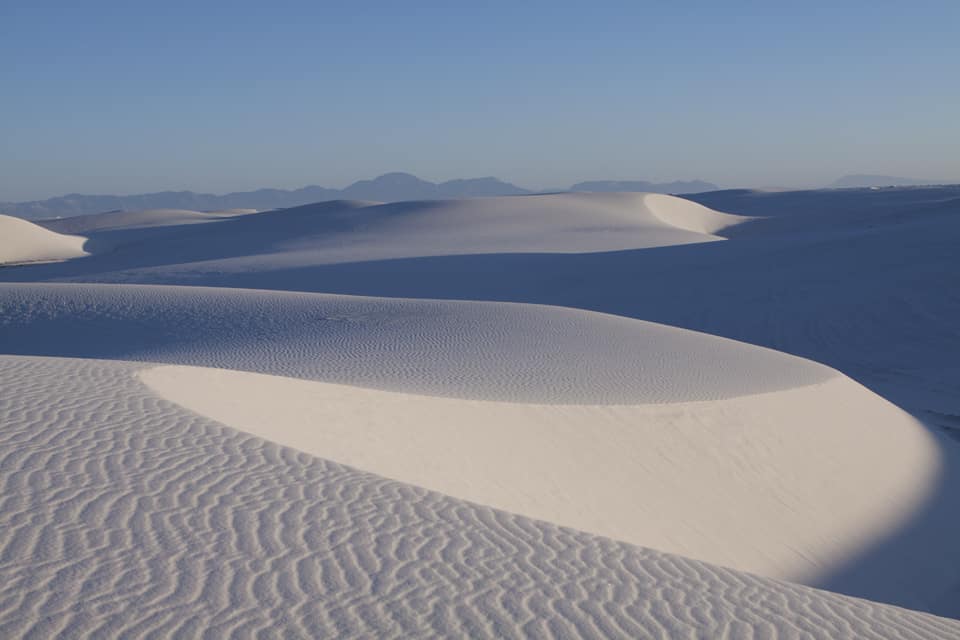

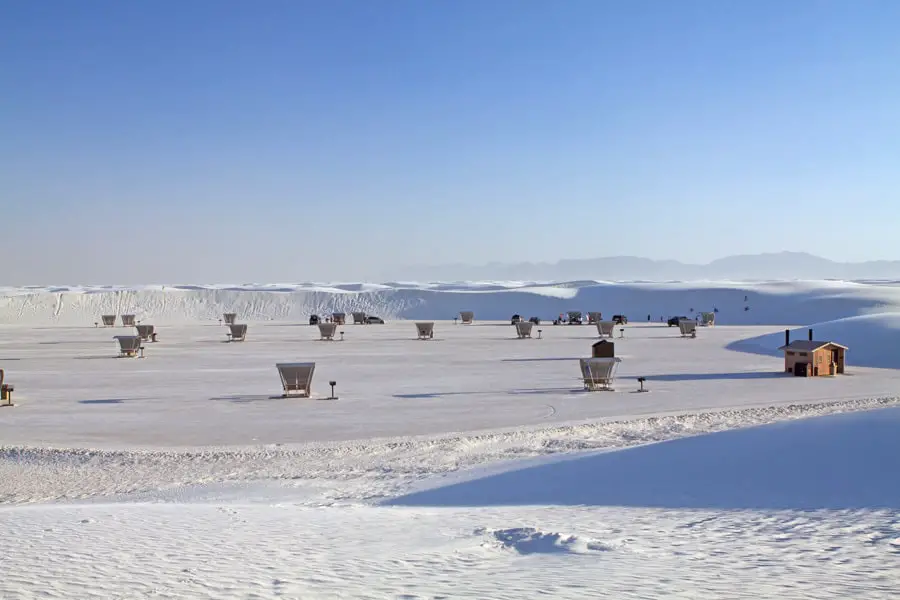
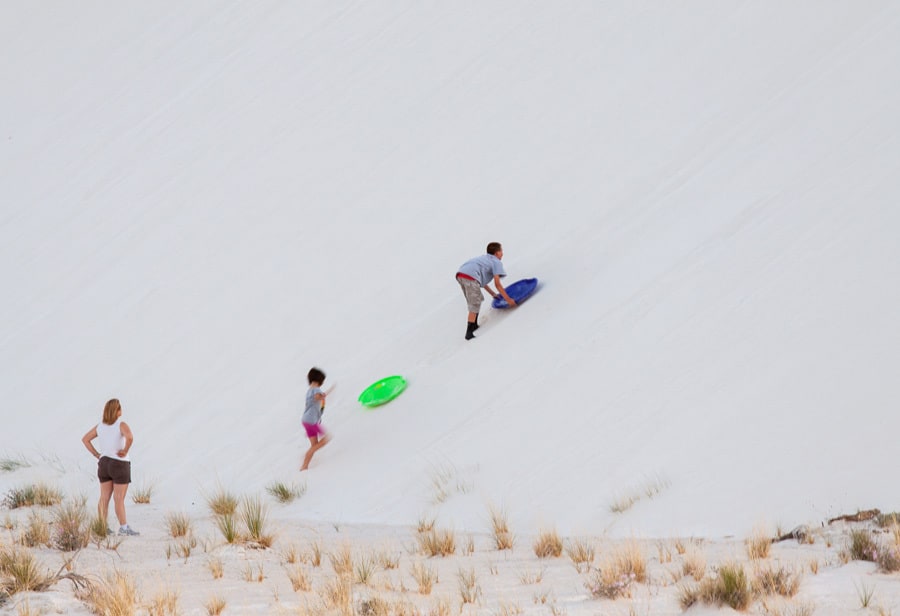





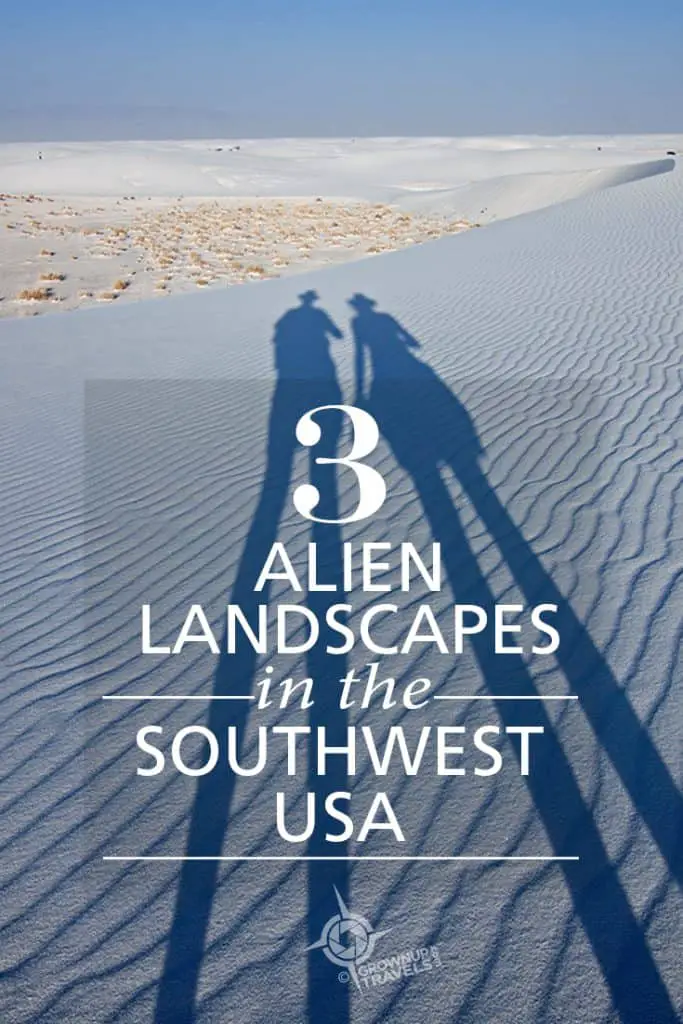











What an amazing, and, yes, alien landscape! But tell the truth, don’t adults also sled down the dunes? Didn’t you?
I was tempted, but when you grow up in Canada, sledding down a white hill is less of a novelty! 🙂 Actually, we were so focused on photographing the landscapes that we were having enough fun doing that!
Amazing! Of course I’d heard about White Sands as the test site for the atomic bomb but I had no idea that it was a National Park nor that it was literally, a stunning landscape of miles of white sand dunes. Love the fact that kids sled down the dunes too! While we’ve visiting many place in Arizona, New Mexico and Utah, I’m thinking that an extensive road trip through the US southwest should be a priority one of these days. Sounds like your trip was fascinating as well as fun!
I still consider our visit to White Sands as one of our standout, most memorable experiences, Anita. Probably one of the most underrated parks in America!
Amazing landscapes. That white sand looks like snow in the pictures, quite a contrast with the blue skies!
There is also a hot air balloon festival that they launch in White Sands, which makes for amazing colour contrasts with the white sands and blue skies, but we weren’t there at the right time of year to capture that, unfortunately. Next time!
Great article. I live in the SW and there are so many interesting sites and activities. I was surprised when I visited white sands. Children were using the sand for “snow boarding”. It reminded me so much of snow.
Carol
White Sands was the inspiration for our visit to this part of New Mexico, after seeing photos on a photographer’s website. Absolutely stunning! I can’t believe more people don’t rave about this place!
I agree there is some unusual and interesting landscape in this part of the world. I visited Meteor Crater many years ago. The desolate landscape we drove through to get there (I suspect we didn’t take the most direct route) just added to the other-worldly feel of the crater experience itself.
I felt the same way about the drive to get to the Crater. But even with the long drives that can be through some pretty desolate country, I still feel drawn to this part of the world for some reason. It’s time for a trip back soon, I think.